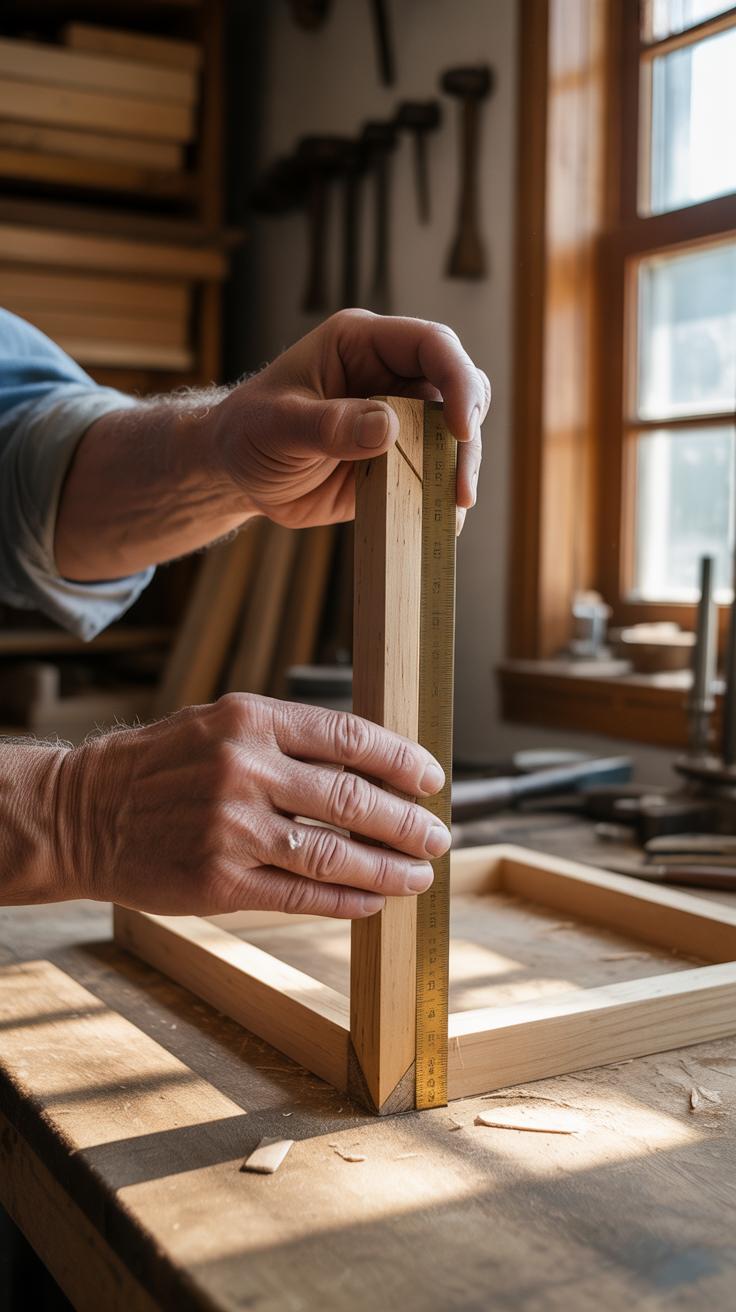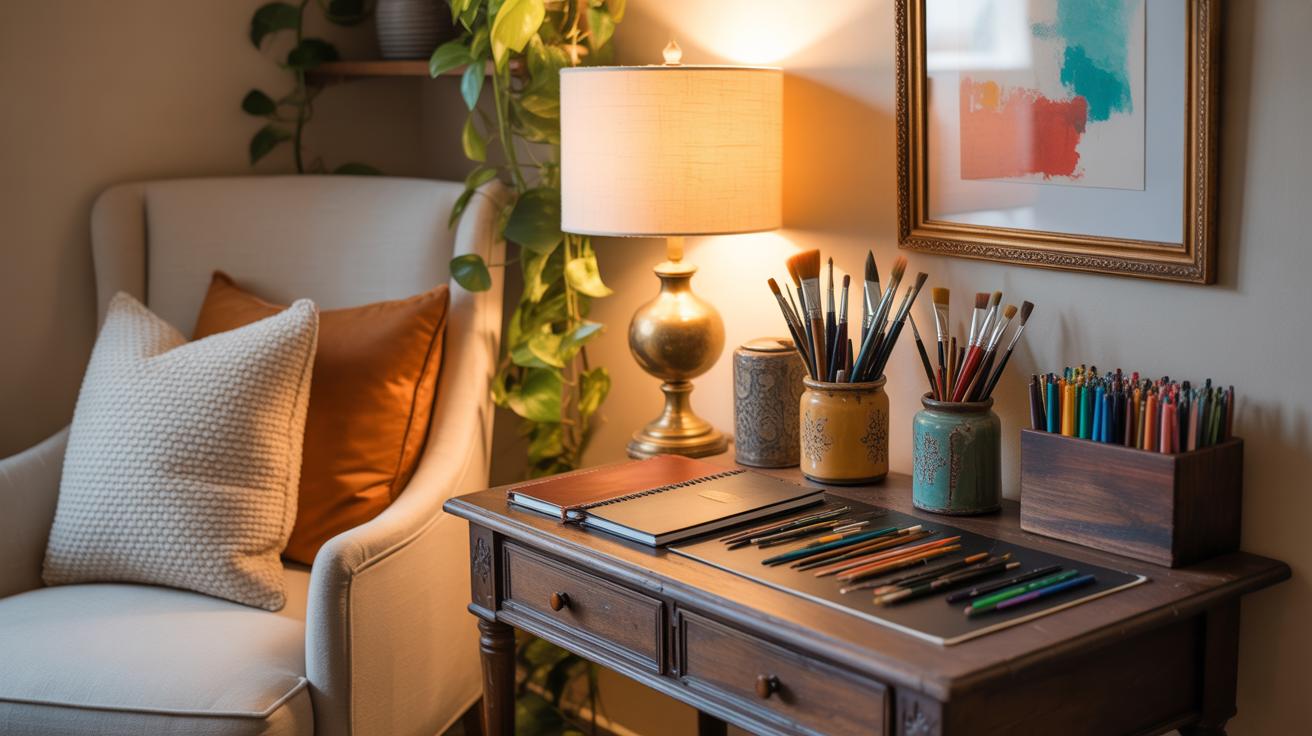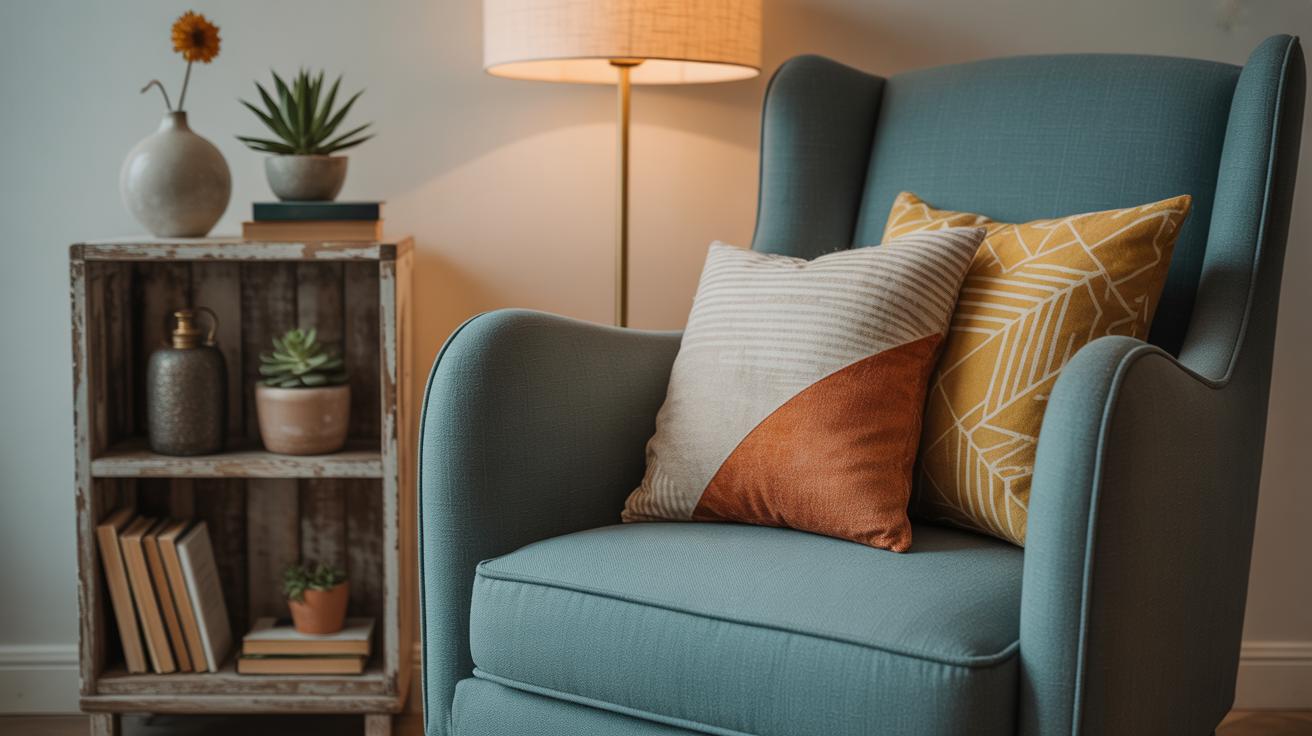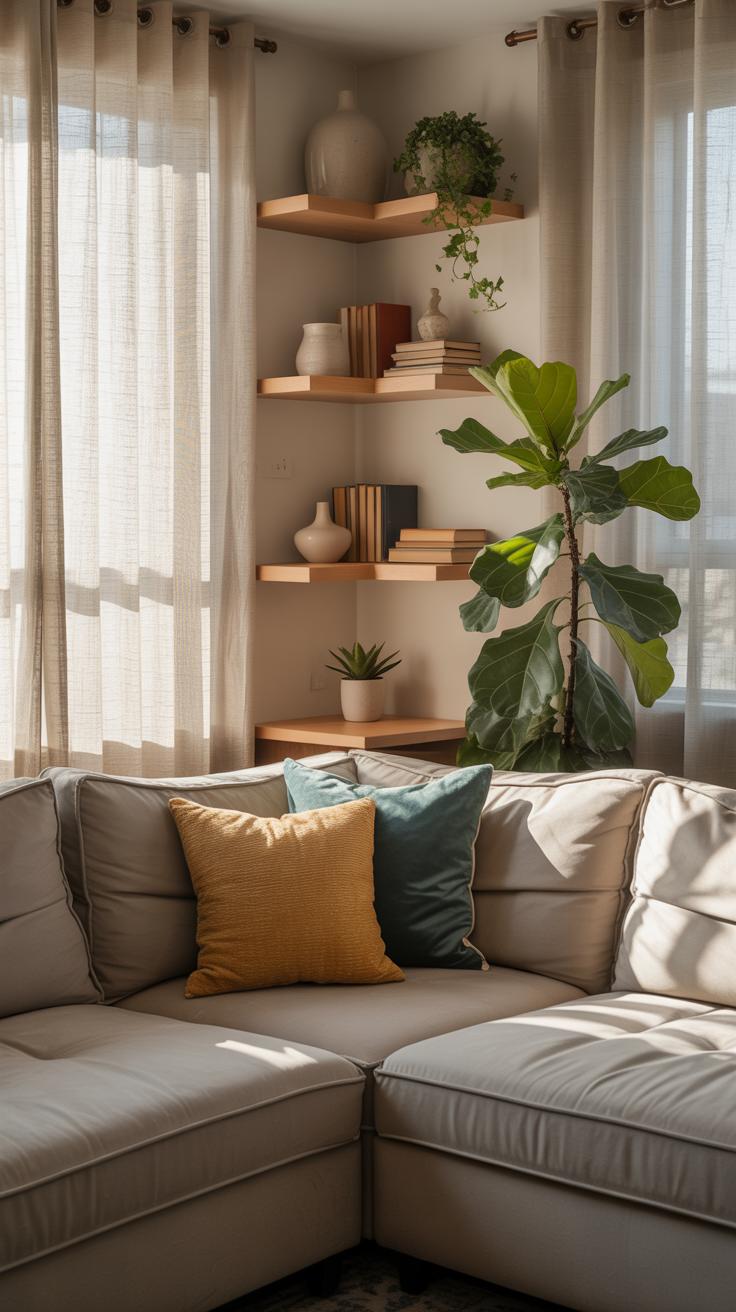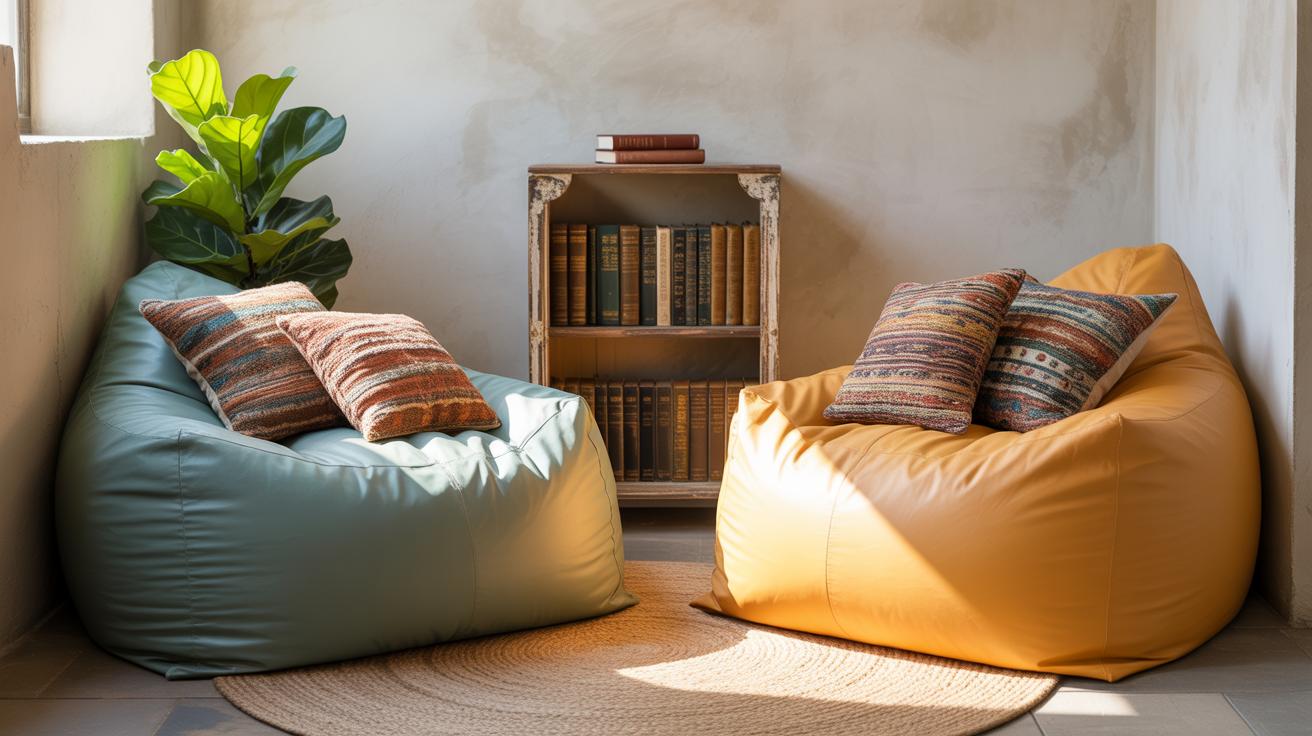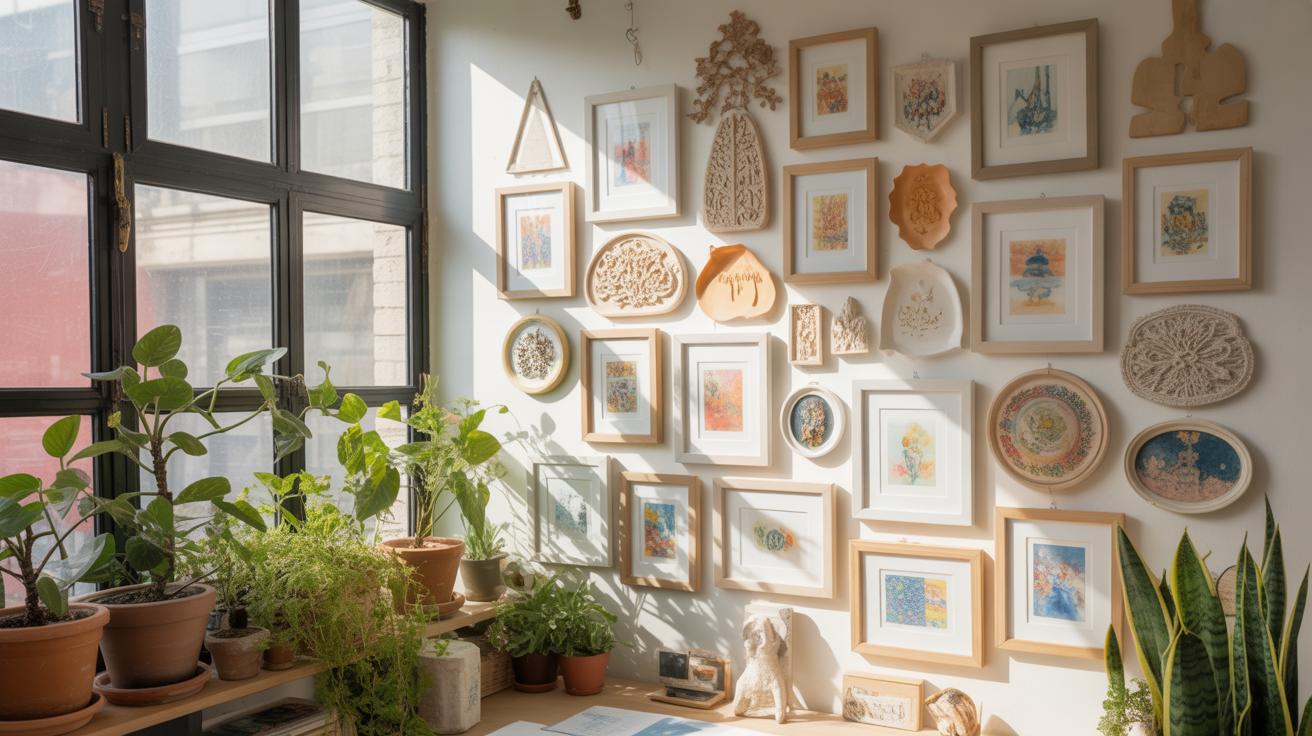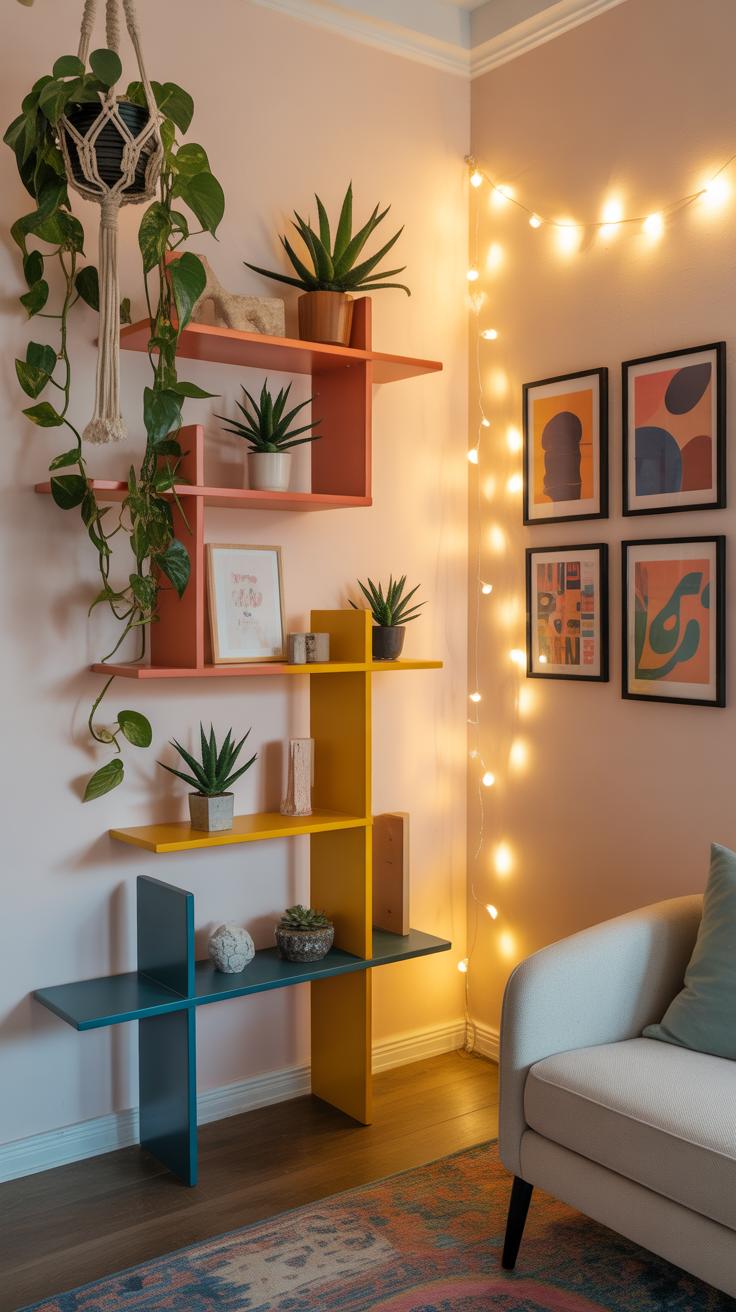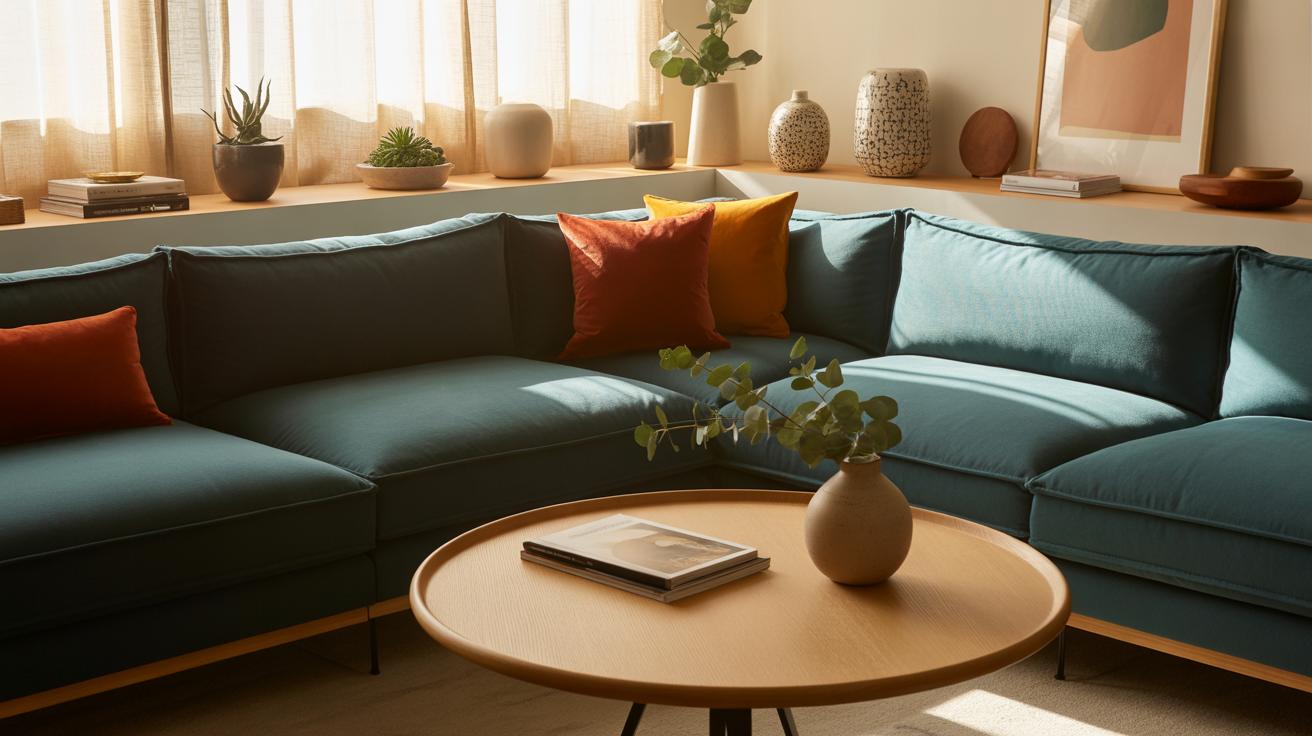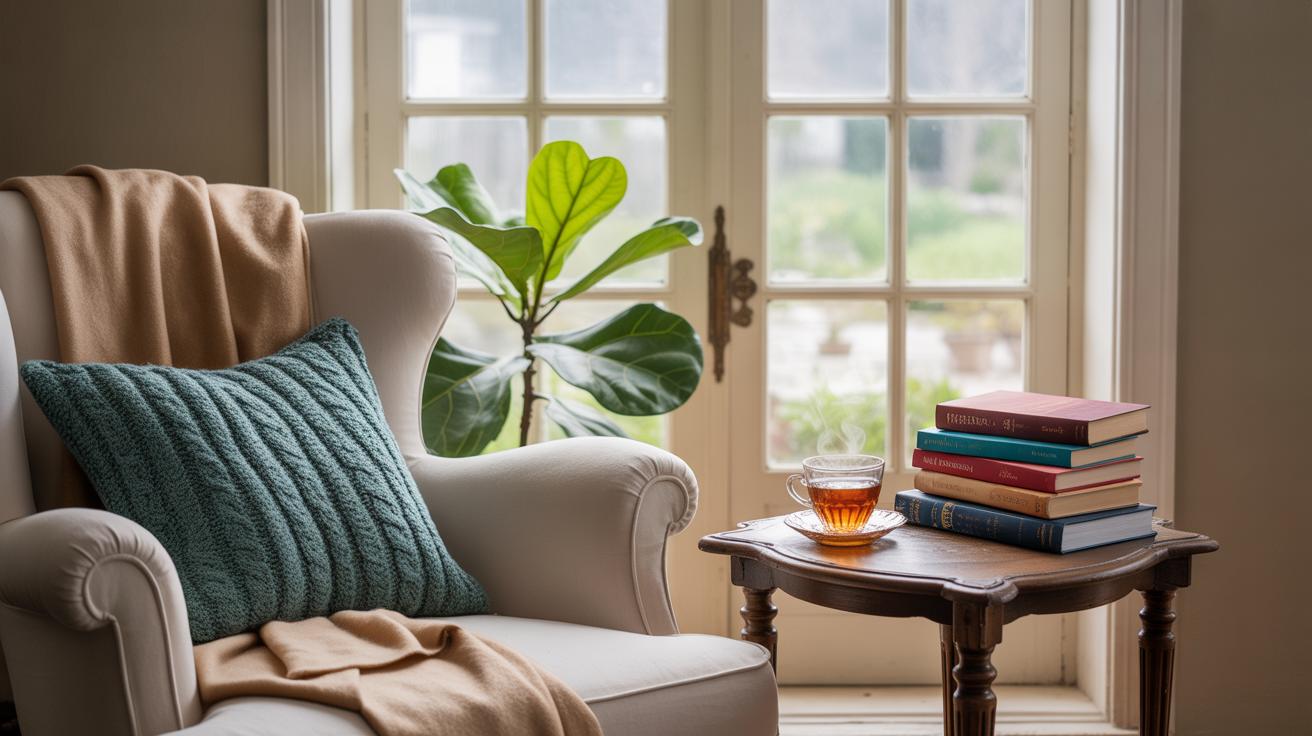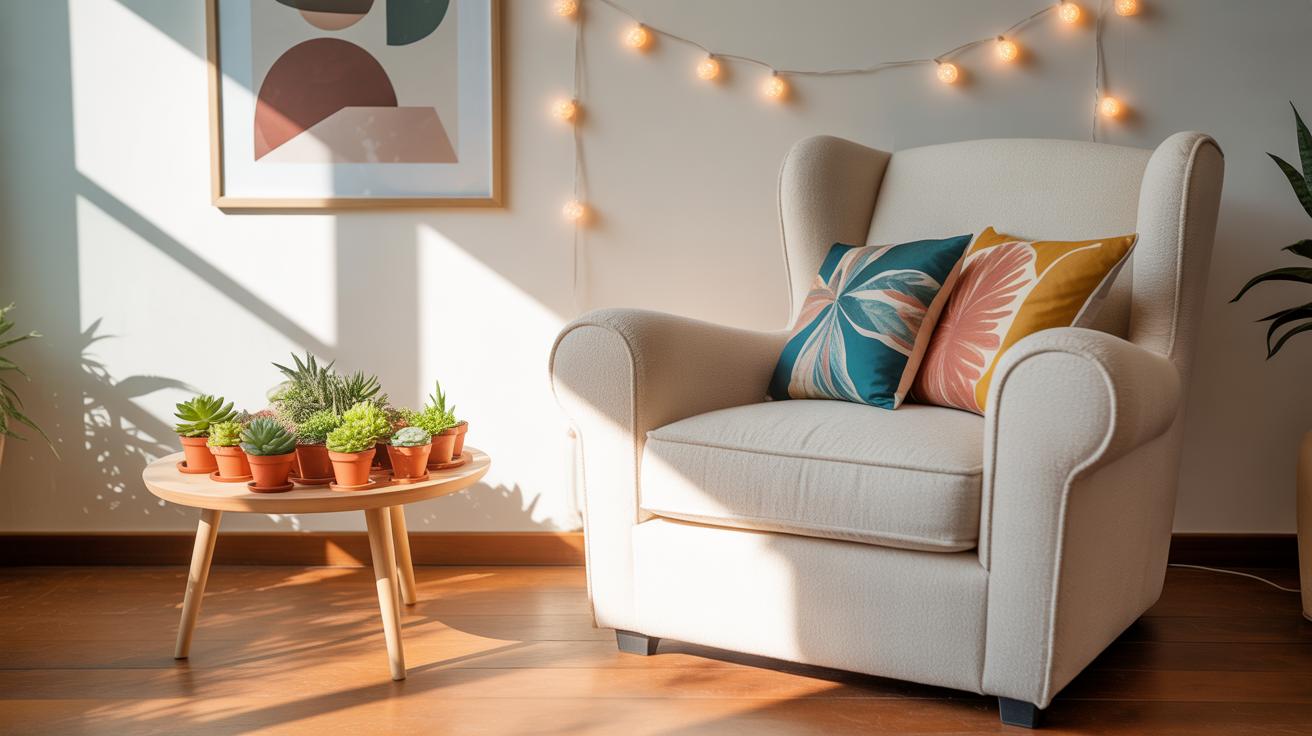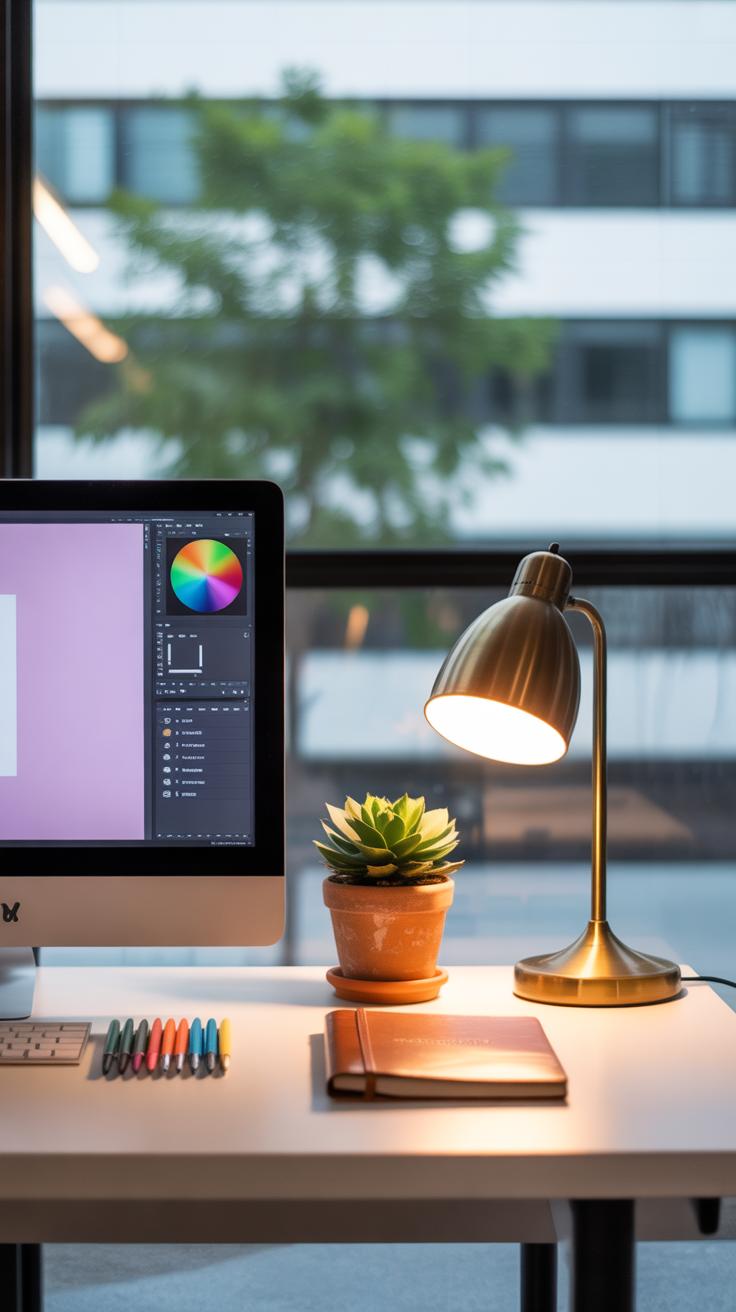Introduction
Creating a cozy room corner can make your living space feel more welcoming and relaxing. Small corners often get overlooked, yet they hold potential to become charming and functional spots within your home. This article shares small corner decor tips for a cozy room corner setup that you can easily apply to your space.
You will learn how to choose the best layout for your corner and discover easy decor ideas to make the area inviting. These tips focus on practical, simple steps anyone can follow, turning unused corners into your favorite parts of the room.
Corner size and shape check
Measuring your corner space
Before you start picking furniture or accessories for your corner, you need to know exactly what you’re working with. Grab a tape measure—most homes have one somewhere—and take a few basic measurements. Measure the length of each wall that forms the corner. Write those numbers down because they’ll guide your choices.
Don’t forget about depth. Corners can look spacious, but if the walls narrow too much beyond the corner point, your options shrink. Measure how far the corner space extends into the room. Sometimes a corner’s shape isn’t just about length; it’s about usable width or space behind a chair or shelf.
Also, check out the height. If ceilings slope or the corner is under a beam, standard furniture might not fit as expected. It’s easy to overlook this detail until you’ve spent time shopping or rearranging.
Identifying corner shapes
Not all corners are right angles. You might find your cozy nook is an acute or obtuse corner. These shapes affect what fits and how you arrange items.
Most rooms have 90-degree corners, which make it straightforward for placing a chair or small table. But tighter corners need more thoughtful pieces—maybe something corner-specific or built-in to take advantage of the angles.
Odd shapes can make decorating tricky, but they also offer unique spots for custom shelves or angled lighting. Recognizing your corner’s shape helps decide if you want to conform to the space with ready-made décor or adapt it with creative solutions.
Once you understand these dimensions and shapes, it becomes easier to imagine what can fit without cramping the space or making it feel cluttered. What do you think your corner looks like when you measure it carefully? The answer might surprise you.
Furniture fit and function for corners
Choosing furniture for corners can be tricky. You want pieces that fit snugly without making the space feel crowded or awkward. Smaller, compact furniture often works best here, but not just any small piece will do. The shape matters—look for furniture designed with corners in mind, like L-shaped shelves or triangular side tables. These can really hug the space, making the corner feel purposeful rather than neglected.
When selecting compact furniture, a few quick tips might help:
- Measure twice, buy once—knowing your corner’s exact dimensions is key.
- Consider shallow depths; slim profiles keep things airy.
- Pick pieces with open or leggy designs to avoid blocking light.
Multipurpose furniture is often a smart bet. Think about a corner bench with storage underneath or a small desk that doubles as a console table. Such items solve space issues and add function. It can feel odd at first to mix uses, but corners are perfect spots for this kind of dual purpose—your corner can be a reading nook, storage area, and work spot all in one.
Still, sometimes simpler is better. Not every corner needs a ton of stuff. I’ve found that just one well-chosen piece that fits the scale and serves a clear role often works best. Would you rather have a lot going on or one standout element? You might have to try both to see what fits your room’s vibe.
Lighting choices for small corners
Selecting corner-friendly lamps
When picking lamps for a small corner, it’s best to think about the space you actually have. Floor lamps with a slim profile tend to work well—they don’t crowd the area but still provide enough light. I’ve found arc lamps particularly useful; their curved shape lets the light reach over furniture without taking up much floor space. A small table lamp on a floating shelf can also brighten a corner without making it feel cluttered.
Placement matters too. Try positioning the lamp slightly behind a chair or next to a small stack of books. That way, the light feels inviting and purposeful rather than just dumped in the corner. If you’re working with an outlet that’s hard to reach, consider a lamp with a longer cord or one powered by batteries. Sometimes, even a clip-on lamp attached to a nearby shelf can solve tricky corners.
Using natural light effectively
Natural light can be a tricky thing in corners, especially if they’re tucked away from windows. But if your corner neighbors a window, think about how to pull that light in. Reflective surfaces placed strategically, like a light-colored wall or a mirror angled just right, can bounce sunlight deeper into the space. Curtains or blinds that filter rather than block light help maintain a soft glow without glare.
Don’t forget the time of day, either. Morning sun can brighten one corner, while afternoon rays might warm another. I sometimes rearrange lightweight furniture depending on the season, chasing better light. And in rooms with narrow windows, adding sheer panels makes a subtle difference. It’s a simple way to keep your cozy corner from feeling closed off or too dark.
Wall decor ideas for corners
Corners often get overlooked, but they hold a lot of potential when it comes to personalizing your space. One simple trick is to add floating shelves. They fit perfectly into corners and give you a chance to display small plants, books, or trinkets—something that both looks good and clears up space elsewhere.
When putting up shelves in a corner, you can try L-shaped brackets or even custom corner shelves that hug the walls snugly—though setting them up might take a bit of patience. Don’t be afraid to mix open shelving with closed storage if clutter tends to gather.
Then, think about hanging art or mirrors to change how the corner feels. A mirror can bounce light around and create a sense of depth, making the corner feel less cramped. Art, on the other hand, can create a focal point. You might pick a single large piece or stagger smaller frames to add texture. I once struggled deciding whether to hang a mirror or a painting; in the end, the mirror worked better to lighten the shadowy nook.
What about clusters of small items? A corner gallery wall isn’t just for big rooms—it can energize a small space too. The key is to avoid overcrowding; leave breathing room so the corner doesn’t feel too busy or awkward.
How do you usually use your room corners? They might seem like afterthoughts, but just a few adjustments can make them surprisingly inviting and practical.
Textiles and color tips for comfort
When setting up a small corner for comfort, textiles play a surprisingly big role. Think beyond just cushions. Fabrics like velvet, chenille, and even flannel have this way of inviting you to touch and settle in. They feel soft, yes, but also add subtle texture that makes the space richer. Linen and cotton work too, especially if you want something breathable but still cozy. Don’t overlook the power of layering fabrics—like mixing a plush throw over a crisp cotton cushion. It creates depth, something your eyes pick up on even if you don’t consciously notice.
Cushions and throws are your best friends here. They not only soften hard surfaces but also let you change the vibe easily. Want something heavier in winter? Opt for wool or fleece throws. Summer calls for lighter cotton or bamboo blends. Use cushions to add rhythm and bounce. Oddly shaped pillows, like bolsters or oversized floor cushions, bring a casual, inviting feel that might make you want to linger longer.
Colors—yeah, they can do a lot more than just look nice. Warm hues like soft terracotta, mustard yellow, or muted rust immediately tug at the feeling of warmth. They don’t have to shout; sometimes a pale peach or dusty rose does the trick quietly. Dark tones are tricky—you’d think they close a space in, but deep blues or greens, when balanced right, can actually feel enveloping in a positive way. What’s interesting is that even neutral greys or beiges can feel cozy if they have warmer undertones, so watch your shades carefully.
Ultimately, you want to think about what feels inviting to you personally. Maybe it’s a corner with a thick knitted throw that seems a little over the top or a splash of burgundy on cushions you didn’t expect. Do those colors and textures make you want to curl up? If yes, you’re on the right path. Sometimes, coziness is more about feel than rules. Have you tried swapping out your usual color palette for something unexpectedly warmer? It might surprise you how much it changes that little corner of yours.
Plants and natural elements
Adding plants to a small corner immediately brings a sense of life. But not all plants handle those dimmer spots well. If your corner doesn’t get much direct sunlight, look for low-light survivors like the snake plant, pothos, or ZZ plant. These tough ones don’t mind neglect or shady conditions—perfect if you forget watering sometimes or your corner is tucked away.
Succulents often come to mind, but many need brighter spots, so be careful jumping straight to those. Instead, fiddle with placement until you find a comfortable nook for your plants without stressing about them wilting under low light.
Beyond greenery, natural objects can enhance the vibe, too. Think about smooth river stones in a shallow dish or a small wooden bowl carved with imperfections. Sometimes, even dried flowers or a bundle of twigs add a subtle touch of nature. They don’t require sunlight or care and still evoke that outdoorsy feel you want indoors.
Have you ever considered mixing textures? Pairing a leafy plant with a rough bark accent or a few polished pebbles can give your corner more personality. It’s less about following strict design rules and more about what feels… natural to you. Maybe next time you’re outside, keep an eye out for interesting bits of wood or stones to bring inside. It’s kind of fun to recycle nature this way, don’t you think?
Organizing corners neatly
Room corners can easily become catch-alls for random items you don’t really have a place for. It’s tempting to pile things there, but over time, clutter takes over and the cozy vibe vanishes. Keeping corners organized takes a bit more intention than just shoving stuff around. You want to create a space that feels peaceful, not chaotic.
One approach is to assign each corner a specific purpose. Maybe it’s a reading nook, a small plant display, or a mini workspace. When you have a clear function, the clutter tends to stay in check. Without that, corners often become a jumble of unrelated items, and frankly, it’s hard to relax in such a spot.
Try making quick visual checks every few days. That little habit can stop clutter from piling up unnoticed. At first, it might feel like a chore. But soon, you’ll start to notice what collects there and can rethink whether those things belong at all.
Using baskets and boxes
Storage baskets and boxes can feel like a small thing, yet they dramatically change how tidy a corner looks. I once replaced a messy stack of magazines and loose chargers with three woven baskets, and the corner looked instantly calmer, even with the same amount of stuff in it.
Consider baskets with lids if dust or little objects are an issue. Open baskets work well for everyday items you want easy access to, like throws or toys. Boxes, especially uniform ones, create a clean, orderly feel and keep edges consistent.
If you want a bit of flair, look for baskets that add texture or color. They don’t need to match perfectly but should fit the room’s tone. Oddly enough, mismatched boxes sometimes make corners feel less rigid and more inviting. You might find that adds to the coziness more than a perfectly coordinated setup.
Regular corner maintenance tips
Just knowing you should tidy corners regularly doesn’t always translate into action, right? So here’s a gentle reminder: a five-minute sweep every couple of days can keep your corners under control. You don’t need a big effort, just enough to catch what starts to spill over.
Another tip is to limit what you put in each corner. When you don’t overstuff spaces, cleaning feels less overwhelming. Also, consider investing in small cleaning tools—like a handheld vacuum or duster—that you keep close by. That way, whenever you spot dust bunnies or dropped crumbs, you can deal with them immediately.
Sometimes, I find myself rotating décor or items in corners. It breaks the monotony and encourages a quick review of what really needs to stay. Do you think that’s worth trying? It might help you avoid holding on to things you no longer use, keeping corners fresh and inviting instead of cluttered.
Example setups for inspiration
Reading nook example setup
Imagine a corner with a snug armchair, angled just right by a window letting in soft daylight. A small side table sits nearby, perfect for a cup of tea or a stack of books. A floor lamp with adjustable brightness ensures you’re well lit after sunset—but not too harsh. A plush throw and a few cushions add layers of comfort, inviting you to linger.
This setup’s strength lies in simplicity. It encourages focus without distractions. You get a mix of natural and artificial light options, which matters more than you might expect. Plus, a nearby basket or shelf keeps your reading material close but tidy. It’s not a big space, but that’s the point—intimate and functional. You might find yourself reading longer here than anywhere else.
Relaxation corner case study
Consider a spot dedicated to quiet moments—no books, no screens, just calm. A low reclining chair or a soft floor cushion anchors the space. Around it, tactile elements like a wool rug, silk curtains, and a small table with scented candles create a mood. The colors lean toward muted earth tones, helping to ease tension.
Sound plays a role here: a small speaker for gentle music or nature sounds adds texture without overwhelming. Natural plants bring life without fuss, making the air feel fresher—or at least it seems that way.
What makes this corner work is its invitation to pause and breathe. It’s less about doing and more about being. Though you might wonder if that space could get lonely, the right soft lighting and personal touches prevent it from feeling empty. It’s your own retreat, quiet but not isolated.
Conclusions
Designing a cozy room corner is about using your space wisely and adding elements that bring comfort and style. By choosing the right layout and adding small decor touches, you can create a corner that feels warm and personal.
Remember, your room corner can serve many purposes, from a reading nook to a quiet spot for rest. Use the tips in this article to start transforming your corner today and enjoy a cozier home environment.


